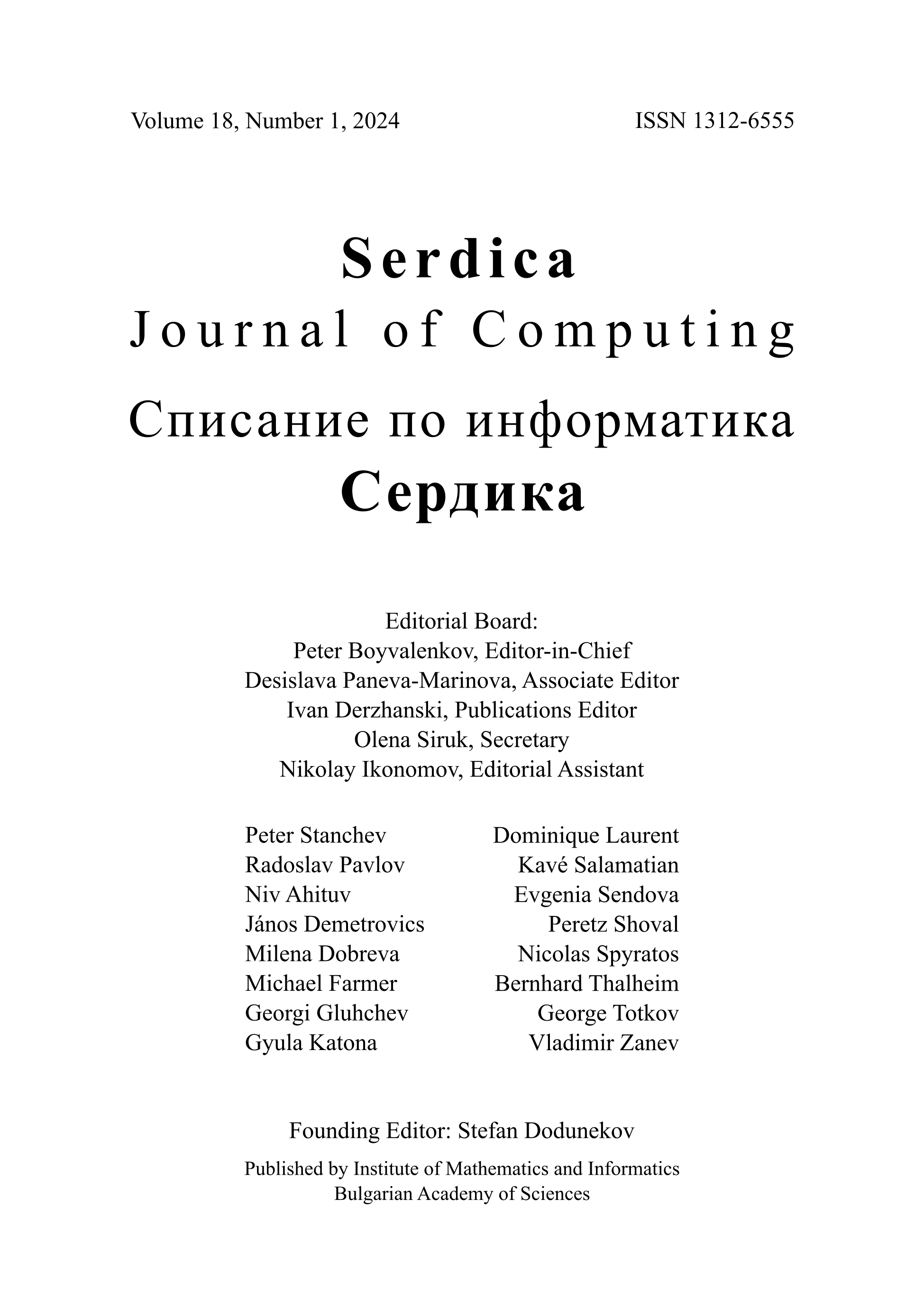Approximating the MaxMin and MinMax Area Triangulations using Angular Constraints
DOI:
https://doi.org/10.55630/sjc.2010.4.321-334Keywords:
Computational Geometry, Triangulation, Planar Point Set, Angle Restricted Triangulation, Approximation, Delauney TriangulationAbstract
We consider sets of points in the two-dimensional Euclidean plane. For a planar point set in general position, i.e. no three points collinear, a triangulation is a maximal set of non-intersecting straight line segments with vertices in the given points. These segments, called edges, subdivide the convex hull of the set into triangular regions called faces or simply triangles. We study two triangulations that optimize the area of the individual triangles: MaxMin and MinMax area triangulation. MaxMin area triangulation is the triangulation that maximizes the area of the smallest area triangle in the triangulation over all possible triangulations of the given point set. Similarly, MinMax area triangulation is the one that minimizes the area of the largest area triangle over all possible triangulations of the point set. For a point set in convex position there are O(n^2 log n) time and O(n^2) space algorithms that compute these two optimal area triangulations. No polynomial time algorithm is known for the general case. In this paper we present an approach to approximation of the MaxMin and MinMax area triangulations of a general point set. The algorithm, based on angular constraints and perfect matchings between triangulations, runs in O(n^3) time and O(n^2) space. We determine the approximation factors as functions of the minimal angles in
the optimal (unknown) triangulation and the approximating one.

